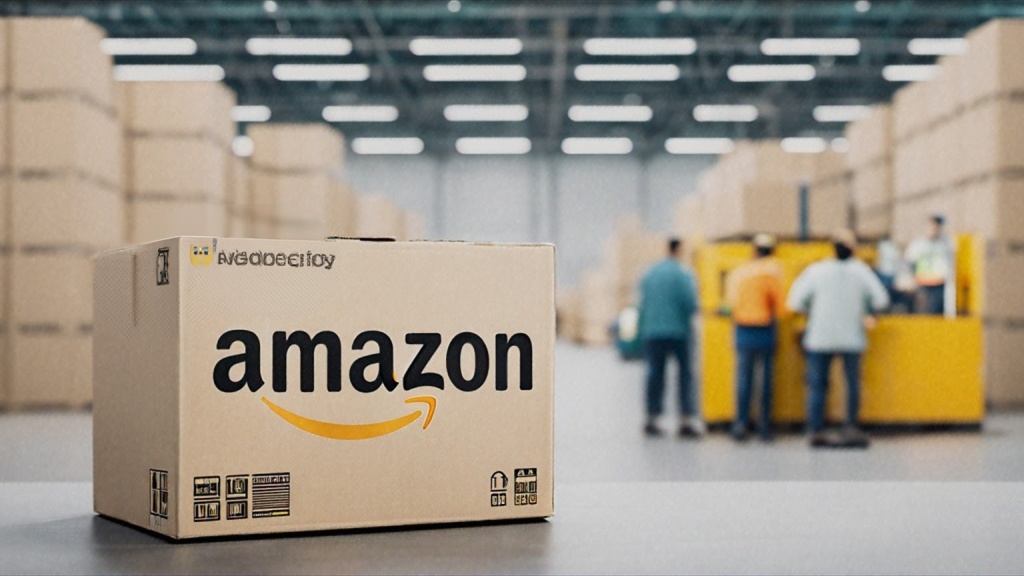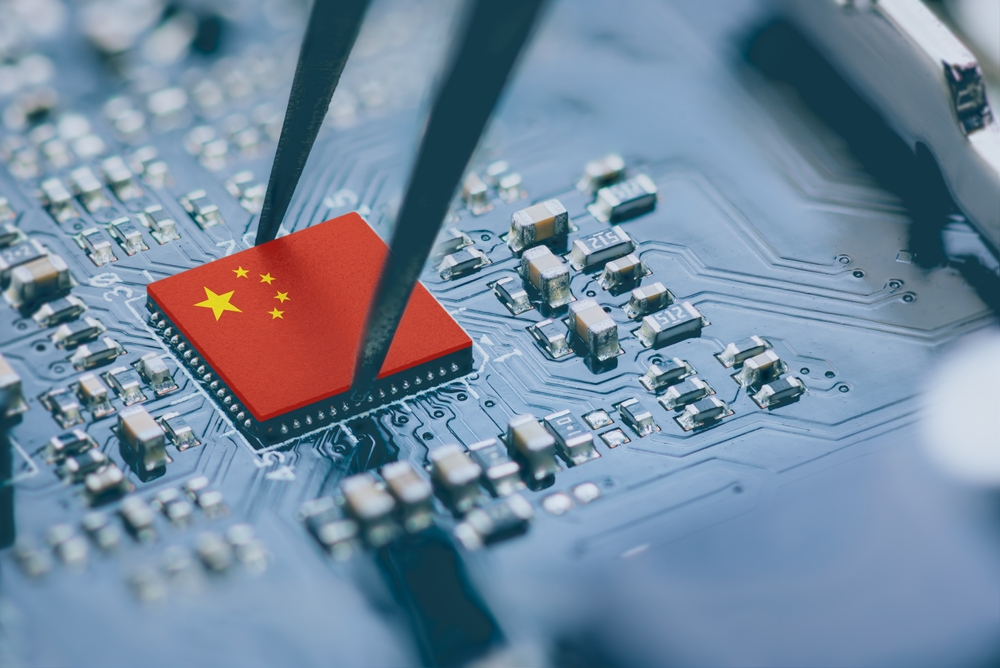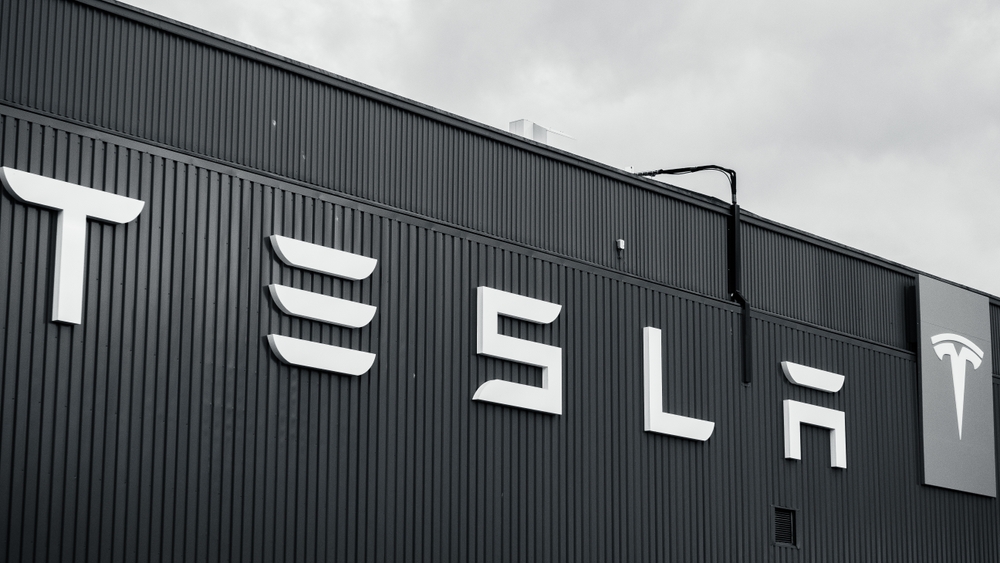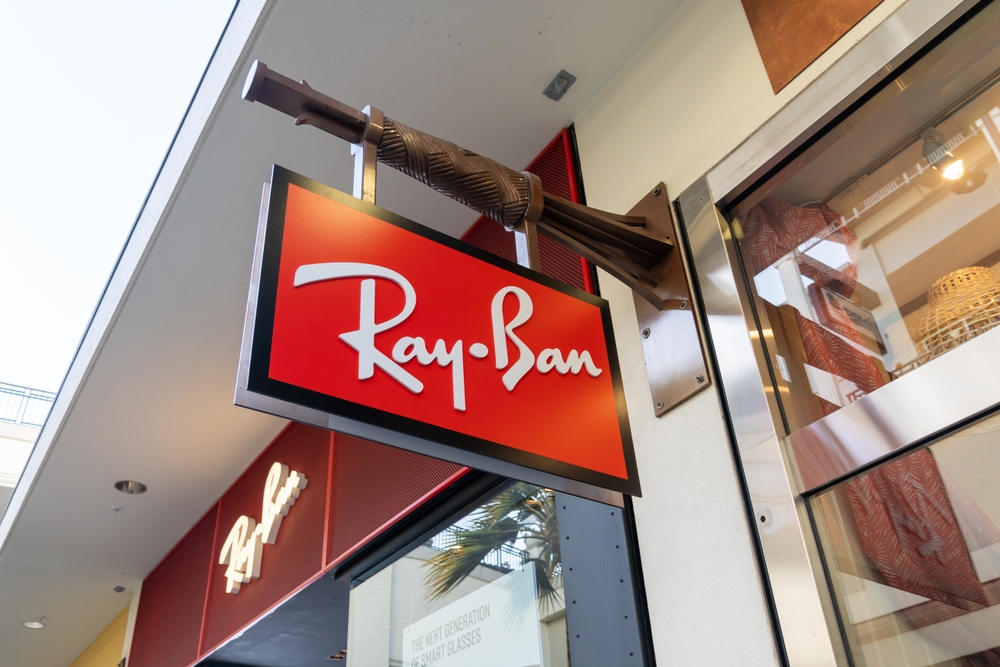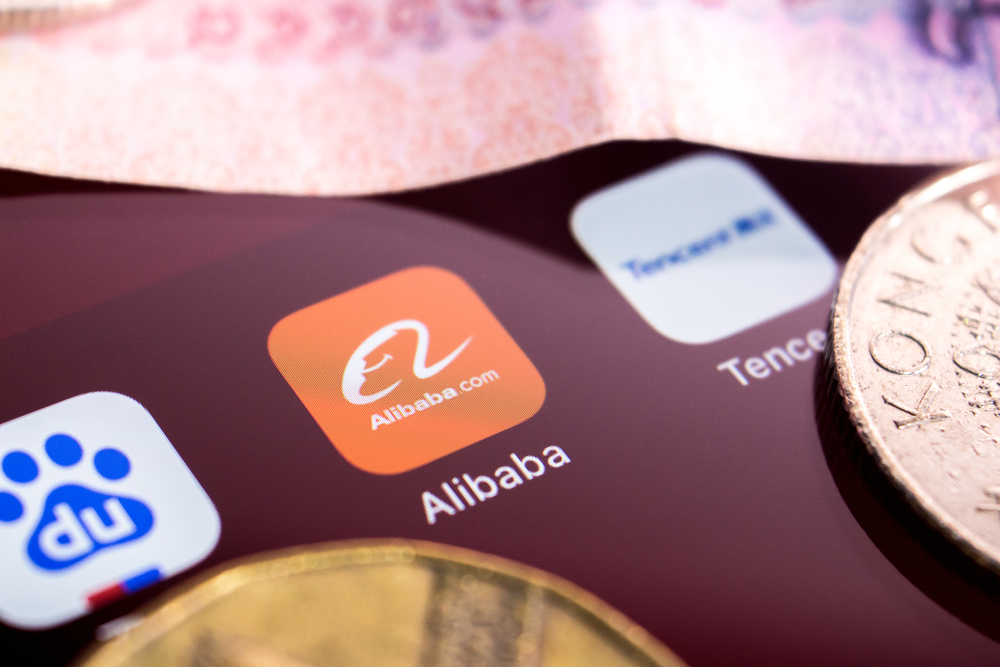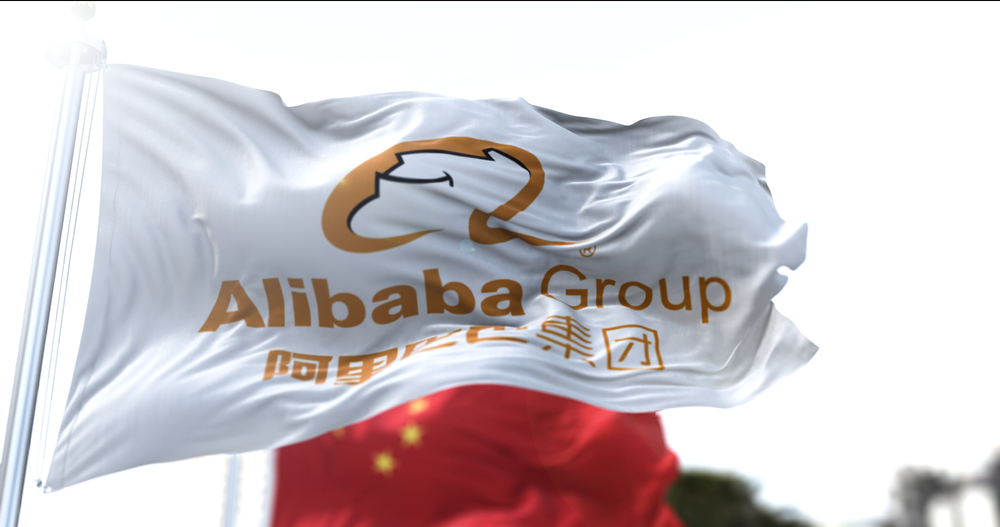Retail Media, Reinvented: Amazon’s UnBoxed Event Highlights AI-Powered Ad Innovation
Amazon Ads has introduced a suite of advanced advertising capabilities at its annual UnBoxed conference, marking a significant step in enhancing its demand-side platform (DSP) and integrating cutting-edge artificial intelligence (AI) tools. These updates aim to empower advertisers with innovative resources to optimize their campaigns and better engage consumers across Amazon’s extensive ecosystem.
New Features to Transform Advertising Experience
The centerpiece of Amazon’s announcements is an all-new experience for the Amazon DSP, which streamlines campaign creation and management. The revamped platform features a consolidated display line-item that has been shown to reduce campaign setup time by an impressive 75% during early testing. Advertisers can also leverage machine learning to receive actionable insights and recommendations, which will help fine-tune their marketing strategies.
Additionally, Amazon has launched a self-service generative AI creative studio, allowing advertisers to create ad assets from a single product image or page. This innovative tool aims to simplify the creative process and enhance scalability, enabling brands to deploy engaging advertisements across various Amazon platforms, including Amazon.com, Prime Video, and Twitch.
Maximizing Advertising Budgets and Campaign Effectiveness
Another notable feature is the introduction of frequency cap controls, which have already proven successful in pilot tests. Advertisers utilizing this feature reported savings of up to 26% on campaign budgets by avoiding duplicate impressions and achieving a 21% increase in incremental reach. Omnicom Media Group’s Chief Activation Officer, Megan Pagliuca, praised these capabilities, stating that they “exceed those of other DSPs.”
To further enrich advertisers’ experiences, Amazon Ads has introduced an ads data manager. This tool allows brands to integrate first-party data from platforms like Salesforce, enabling a more seamless campaign deployment and measurement process across Amazon DSP and Amazon Marketing Cloud (AMC).
Expanding Advertising Reach and Insights
Amazon is also expanding its advertising offerings by launching high-value audience solutions and optimal frequency analysis through AMC. These enhancements aim to boost campaign performance, as demonstrated by Honest Kitchen, which saw a 23% increase in impressions and a 44% rise in product detail page views without adjusting its budget.
Looking ahead, Amazon is testing multi-touch attribution to enable comprehensive multichannel campaign measurement, with plans for a full rollout in 2025. The company also plans to extend ads on Prime Video to several countries, including Brazil and Japan, following its initial rollout in multiple regions earlier this year.
With these exciting developments, Amazon Ads is positioning itself as a formidable player in the advertising landscape, offering innovative tools that meet the evolving needs of marketers while enhancing the consumer shopping experience.
Tech Turf Wars: White House Considers Targeted Export Controls on Advanced AI Chips
The Biden administration is exploring a new strategy to restrict sales of advanced artificial intelligence (AI) chips from leading U.S. companies like Nvidia Corp. This proposed policy aims to introduce export licenses for specific territories, addressing national security concerns while monitoring the rapid advancements in AI technology.
Focus on National Interests
Sources familiar with the discussions, who requested anonymity, indicate that the plan would create a licensing framework targeting individual regions, particularly in areas where strategic partnerships are being developed. This approach could enable countries in the Persian Gulf and other territories to build a stockpile of AI chips for large enterprises and hubs, aligning with U.S. national interests.
The discussions are still in the early stages but have reportedly gained traction in recent weeks. Officials envision a licensing process for AI chips in regions like the UK and Saudi Arabia, allowing for greater control over how these technologies are distributed and utilized. They emphasize that the commercial aspects of these arrangements would generally fall outside the purview of these regulatory measures.
Impact on Major Players
Nvidia, a dominant force in the AI chip market, has seen its shares decline by 4.2% amid these developments, marking a notable shift following a record close earlier in the week. Other major companies, including Advanced Micro Devices Inc. (AMD) and Intel Corp., are also under scrutiny as the administration works to tighten export controls on semiconductors.
A spokesperson for the White House National Security Council highlighted the administration’s recognition of the “trivial potential of artificial intelligence for health,” alongside the “challenges and risks associated with this new technology.” The goal is to enhance security measures while navigating the evolving landscape of AI innovation.
Targeting China’s Ambitions
This initiative appears to be a direct response to China’s growing ambitions in the AI sector, as Washington seeks to curb the potential diversion of U.S. technology. Reports suggest that discussions are underway to limit exports to over 40 nations in Africa and Asia, where there are concerns about products reaching China.
The U.S. has decided to grant export licenses for semiconductors, particularly Nvidia chips, as a strategic lever for achieving broader diplomatic objectives. By carefully regulating access to cutting-edge technology, the administration hopes to maintain a competitive edge in the global technology race while ensuring national security.
As these discussions unfold, the future of AI technology exports remains uncertain, with potential implications for international relations and the tech industry at large.
Antitrust Showdown: Google Faces Potential Breakup of Key Businesses
The U.S. Department of Justice (DOJ) is contemplating asking a federal judge to compel Google to divest several key components of its business to dismantle what it describes as an online search monopoly. This move could potentially reshape the landscape of the tech industry, affecting millions of users and numerous businesses.
Proposed Remedies Target Google’s Dominance
In a court filing released late Tuesday, federal prosecutors indicated that they might seek not only structural changes but also a mandate to open Google’s proprietary data to competitors, which the DOJ believes is essential for fostering a competitive environment. “For more than a decade, Google has controlled the most popular distribution channels, leaving rivals with little-to-no incentive to compete for users,” the DOJ stated. This sentiment highlights the urgency of addressing the perceived harms caused by Google’s extensive market control.
Focus on Key Products and Agreements
The DOJ’s proposed remedies may target Google’s widely used products, including its Chrome browser, Android operating system, and app store, suggesting that these elements have been leveraged to reinforce its dominance in the search market. Prosecutors are particularly interested in addressing Google’s default search agreements, which they believe could be a significant barrier to entry for competitors.
Google’s Response and Concerns Over Government Overreach
In response to the filing, Google’s Vice President of Regulatory Affairs, Lee-Anne Mulholland, expressed concerns about the implications of the DOJ’s aggressive stance. She warned that “government overreach in a fast-moving industry may have negative unintended consequences for American innovation and America’s consumers.” Mulholland characterized the government’s approach as sweeping, cautioning that it could adversely affect various sectors and diminish American competitiveness.
Court Proceedings and Future Implications
U.S. District Judge Amit Mehta previously ruled that Google has illegally leveraged its dominant position to stifle competition, setting a timeline for trial proceedings regarding potential remedies to begin in the spring of next year. A decision is expected by August 2025, with Google planning to appeal Mehta’s ruling once a remedy is finalized.
Experts anticipate that the appeals process could stretch for years, with estimates reaching up to five years. George Hay, a law professor at Cornell University and former chief economist for the DOJ’s antitrust division, emphasized the complexity and potential length of the legal battles ahead.
As the situation develops, the outcome could have profound effects on the tech industry, regulatory practices, and the competitive dynamics of online services.
Tesla’s Autonomous Fleet Unveiled: Musk Predicts Affordable Robotaxi by 2027
At the much-anticipated “We, Robot” event held at Warner Bros. Studios in Burbank, California, Tesla CEO Elon Musk unveiled the company’s new Cybercab, a fully autonomous vehicle he promises will hit the market for less than $30,000. Musk also teased the Robovan, an autonomous van capable of carrying 20 passengers, as part of his broader vision for a driverless future.
Arriving at the event in a Cybercab himself, Musk appeared with his signature flair—this time accompanied by a man dressed in a space suit. Human-like robots mingled with the crowd, serving drinks and even breaking out into dance, underscoring the futuristic vibe of the evening.
Musk’s Cybercab, the star of the event, boasts a sleek design with no steering wheel or pedals and uses inductive charging instead of traditional plugs. He described the vehicle as a comfortable “lounge on wheels” that will allow passengers to relax, sleep, or watch movies while traveling. The car, priced below $30,000, is expected to be in production by 2026—or “before 2027,” as Musk cautiously added, noting his usual optimism with deadlines.
For years, skeptics have questioned whether Tesla could deliver on its promises of fully self-driving cars, and the company has faced numerous delays and regulatory challenges. However, Musk insists Tesla has made significant strides, particularly with its Full Self-Driving (FSD) technology. By next year, the company plans to introduce autonomous driving to its Model 3 and Model Y cars in California and Texas, pending regulatory approval. The billionaire envisions a future where autonomous cars operate like Uber, with owners creating their own fleets of ride-share vehicles.
“It’s going to be a glorious future,” Musk proclaimed, adding that autonomous vehicles would reclaim urban spaces by turning parking lots into parks, and make roads exponentially safer. “With that amount of training data, it’s obviously going to be much better than a human can be because you can’t live a million lives,” he said. “It’ll be 10, 20, 30 times safer than a human.”
While the Robovan was also teased during the event, Musk gave few details about when it would be available or how much it would cost. The vehicle is designed to carry up to 20 passengers or goods, presenting opportunities for ride-sharing or cargo delivery.
Tesla’s humanoid robots, dubbed Optimus, were also showcased, with Musk predicting that they could be mass-produced for up to $30,000. The robots performed a choreographed dance to Daft Punk’s “Robot Rock” to cap off the event, adding a theatrical touch to the unveiling.
Despite the excitement, challenges loom for Tesla. The company is facing a class-action lawsuit from customers who have yet to receive the full self-driving technology they were promised. Additionally, U.S. safety regulators have placed Tesla under scrutiny following a series of accidents involving its autopilot systems.
Still, Musk remains undeterred, confident that his vision of a driverless future is just around the corner. As always, time will tell if Tesla can finally make good on its ambitious goals.
For more details, read the full article here.
The Future of Bitcoin: How Institutional Interest via Spot ETFs Is Reshaping the Market!
The cryptocurrency market has witnessed a significant milestone as spot Bitcoin ETFs (Exchange-Traded Funds) now hold an impressive 5% of the total Bitcoin supply. This development, first reported by Coincu, indicates a growing institutional interest in Bitcoin, a trend that could have long-term implications for the broader financial market.
As of October 5th, these ETFs collectively manage more than 911,000 BTC. The leading firm in the U.S. ETF market is BlackRock, with a massive $22.91 billion in Bitcoin holdings. Grayscale is in second place with $13.75 billion, although it has seen a slight decline in its market share over recent months. Other firms, such as WisdomTree, Franklin Templeton, Valkyrie, VanEck, Invesco, Bitwise, and 21Shares, hold smaller positions but continue to contribute to the overall market growth.
The surge in Bitcoin ETF holdings highlights the continued maturation of the cryptocurrency market. Spot ETFs, which were approved earlier this year in January, have provided a regulated and efficient means for institutions to gain exposure to Bitcoin. This approval coincided with a period of strong market performance, with Bitcoin reaching an all-time high of over $73,000 in March. Many analysts attribute this price surge to the increased adoption and access to Bitcoin enabled by these new financial products.
Spot Bitcoin ETFs have made it easier for traditional investors to include the cryptocurrency in their portfolios. By offering a familiar ETF structure, these funds enable investors to introduce Bitcoin into retirement or tax-advantaged accounts alongside traditional securities. More importantly, these instruments allow large institutions to enter the Bitcoin market through a regulated channel, bridging the gap between traditional finance and the emerging crypto economy.
The influx of institutional capital into Bitcoin through spot ETFs is a positive sign for the long-term growth of the cryptocurrency market. As more companies and funds explore these opportunities, it’s likely that the market will continue to see increased demand and price stability.
For more details, read the full article here.
Ray-Ban Smart Glasses Get a Makeover: New Translucent Style and AI-Powered Reminders!
Meta’s latest update to its Ray-Ban smart glasses series promises to redefine the way we interact with technology. During its annual Connect conference, the tech giant announced a series of new software enhancements that make the wearable device even smarter, adding the ability to help you “remember” things you see and support real-time language translation. Alongside these updates, Meta introduced a sleek, translucent frame style that provides a fresh take on their futuristic eyewear.
“Reminders” Feature: Never Forget a Thing Again
The new “Reminders” feature is arguably the highlight of the update. The glasses can now take a photo of what you’re looking at—say, a shopping list or a recipe—and send a reminder about it to your phone later. This functionality allows you to keep track of your groceries, important notes, or even business cards effortlessly, making the glasses a practical extension of your memory.
In addition, the glasses now support scanning QR codes and even making phone calls by simply looking at a number. It’s all part of Meta’s push to integrate everyday utility with high-tech innovation, making its smart glasses not just an accessory, but a practical tool for everyday tasks.
Real-Time Language Translation: Bridging Communication Gaps
Another major addition to the glasses is the upcoming real-time language translation feature. Currently, the Ray-Ban Meta glasses can translate a few languages from static images. However, with the new update, the glasses will soon be able to process conversations in real-time, providing translations between English, French, Italian, and Spanish. Through discreet speakers built into the glasses, you’ll be able to hear translations of what’s being said around you, making it easier to navigate foreign environments or communicate with people who speak different languages.
New Styles: Tech-Forward and Transparent
The software updates aren’t the only new development—Meta has partnered with Ray-Ban’s parent company, EssilorLuxottica, to release a limited-edition series of translucent frames. This design decision is reminiscent of the transparent tech gadgets of the 1990s, like the Game Boy Color, allowing users to see the advanced tech nestled within the frame. The new style is now available for purchase, but with only 7,500 units on offer, these clear frames are bound to be a collector’s item for tech enthusiasts.
A Year of Mixed Outcomes for AI Devices
While Meta’s Ray-Ban smart glasses have garnered attention and positive feedback, AI-powered wearables as a category have had a challenging year. Competing products like Humane’s AI Pin have struggled with poor sales, and the Rabbit R1 faced harsh criticism for its execution. Despite these setbacks in the industry, Meta appears to be thriving. CEO Mark Zuckerberg has stated that the smart glasses have exceeded expectations, leading to a ramp-up in production. According to IDC estimates, Meta has shipped more than 700,000 units, with demand doubling between the first and second quarters of this year.
Zuckerberg’s Vision: A Future Where Glasses Outshine Phones
Zuckerberg remains optimistic about the future of smart glasses. In a recent interview, he remarked, “Meta AI is becoming a more and more prominent feature of the glasses, and there’s more stuff that you can do. It’s not like we’re going to throw away our phones, but I think what’s going to happen is that, slowly, we’re just going to start doing more things with our glasses and leaving our phones in our pockets more.”
Whether or not these updates will be enough to sway consumers remains to be seen. But one thing is clear: Meta is betting big on making AI-powered eyewear the next big step in wearable technology.
For more details, visit the full article on The Verge.
Tech Titans Thrive as China Unveils Bold Stimulus Package
Hong Kong – In a remarkable turn of events, consumer tech giants Alibaba Group Holding Ltd., JD.com Inc., and Meituan experienced a significant surge in their stock prices following the Chinese government’s announcement of an extensive stimulus plan aimed at revitalizing the faltering economy.
The measures, which target a variety of sectors, have rekindled optimism among investors, resulting in a massive buying spree that saw Meituan and JD both rise by over 20% in Hong Kong trading from Thursday to Friday. This two-day performance marks the best for each company since 2022. Alibaba, too, benefited from this positive momentum, with its shares climbing as much as 15% during the same period.
Stimulus Measures Target Economic Recovery
The Chinese government’s proactive stance surprised many analysts, as it encompassed a wide array of support initiatives. Among the measures introduced are financial relief for the struggling property sector, direct cash payments to residents facing economic hardships, and enhanced social security benefits for unemployed graduates. Such policies have helped alleviate fears surrounding the high levels of debt within the property market and the rising youth unemployment rates, leading to a favorable climate for consumer and internet firms alike.
Buybacks Signal Investor Confidence
Cash-rich companies, notably Alibaba, are spearheading a significant resurgence in share buybacks in Hong Kong this year. The returns from China’s leading tech stocks are outpacing those of global competitors, with Alibaba offering a shareholder yield exceeding 8% as of the beginning of October, which is more than double that of any company in the Magnificent Seven in the US. While earlier buybacks served as a defensive strategy to mitigate stock declines amidst economic uncertainties, the latest policy announcements from Beijing are catalyzing renewed investor interest in these beleaguered tech firms.
Future Outlook Remains Bright
Bloomberg Economics indicates that alongside the unexpected stimulus measures announced by the People’s Bank of China, the Politburo’s firm commitment to utilize fiscal and monetary strategies to support growth signals a more serious approach to stabilizing employment and fostering economic recovery. With the potential for additional supportive measures on the horizon, particularly aimed at bolstering job markets and consumption demand, the outlook for China’s tech sector appears increasingly promising.
For further details, visit the full article on Bloomberg.
Fidelity Slashes Valuation of Elon Musk’s X by 79%, Leaving It Worth $9.4 Billion
Fidelity Investments has drastically reduced its valuation of Elon Musk’s social media platform, X (formerly Twitter), by an astonishing 79%. The asset management firm now estimates its stake in the platform is worth approximately $4.19 million, a dramatic decline from its original investment of $19.66 million. This news emerges from Fidelity’s latest disclosures for its Blue Chip Growth Fund, showcasing the volatility surrounding the platform since Musk’s acquisition.
Fidelity’s valuation adjustment signifies a significant downturn in X’s market position, now estimated at a mere $9.4 billion overall. This represents a sharp decrease from the $44 billion Musk paid to acquire the platform in 2022. The reduction comes after a series of markdowns; just a few months prior, Fidelity had pegged the value of its shares in X at around $5.5 million as of the end of July. This pattern of declining valuation raises questions about the platform’s future and sustainability in a competitive social media landscape.
The 78.7% decrease in valuation underscores the challenges X faces in regaining its footing following the leadership changes and strategic shifts implemented by Musk. Industry experts suggest that factors contributing to this decline include declining user engagement, advertising revenue challenges, and increasing competition from other platforms. As X continues to navigate these turbulent waters, investors are closely monitoring its performance and potential for recovery.
Musk’s acquisition of X has sparked significant interest and scrutiny, particularly as it marks a pivotal moment in the evolution of social media. With such a steep decline in value, the future direction of the platform remains uncertain. Investors and analysts alike are left to wonder if Musk can pivot the company back to profitability or if it will continue to struggle under the weight of its diminished valuation.
For more details on this evolving story, visit the full article on TechCrunch.
AI Revolution Ahead? Sam Altman’s Vision of a World Where AI Superintelligence Takes the Lead
Sam Altman, CEO of OpenAI and one of its co-founders, shared an optimistic vision for the future shaped by artificial intelligence. Altman describes a world where AI enhances human capabilities and facilitates groundbreaking advancements, stating that the future “is going to be so bright that no one can do it justice by trying to write about it now.” His reflections come at a pivotal moment as society grapples with the implications of rapidly evolving AI technologies.
Superintelligence on the Horizon
Altman believes that achieving superintelligence—where AI surpasses human intelligence—could occur “in a few thousand days.” While he acknowledges that the timeline might extend longer, his confidence remains firm. He articulates a transformative role for AI: “Humans will have AI assistants that can do much more than what they can currently accomplish.” He envisions these assistants managing complex tasks like coordinating medical care and advancing scientific research, paving the way for new innovations.
Challenges Ahead
However, Altman recognizes significant hurdles that need addressing. Chief among them is the infrastructure required to support AI. He warns, “If we don’t build enough infrastructure, AI will be a very limited resource that wars get fought over and that becomes mostly a tool for rich people.” This insight underscores the potential for disparities in access to AI technology, emphasizing the need for equitable development to ensure widespread benefits.
Labor Market Transformations
The rise of AI is also expected to bring about “a significant change in labor markets,” though Altman is optimistic that humanity will not “run out of things to do.” This perspective stands in contrast to fears that AI could lead to widespread job displacement. As industries evolve and new roles emerge, Altman believes that the essence of human creativity and ingenuity will continue to thrive alongside advanced AI technologies.
A Divided Perspective on AI’s Future
While Altman presents a hopeful outlook, the conversation around AI is multifaceted, with critics warning of potential risks. Concerns about AI taking over human roles rather than assisting them remain prevalent. As AI continues to evolve, the next few years will be critical in determining how these technologies reshape our world.
For more insights on Altman’s vision and the future of AI, visit Neowin.
Tech Titans Rally: Alibaba, JD, Meitian Soar After China Stimulus Announcement
Alibaba Group Holding Ltd., JD.com Inc., and Meituan experienced substantial gains in their stock prices following the Chinese government’s recent announcement of a comprehensive economic stimulus plan. This initiative, aimed at rejuvenating the struggling domestic economy, sparked a surge of optimism among investors, leading to significant buying activity across consumer tech firms.
The catalyst for this remarkable turnaround was the Chinese government’s unexpected breadth of stimulus actions. These measures include targeted support for the beleaguered property sector, cash handouts for citizens facing economic hardship, and enhanced social security benefits for unemployed graduates. As a result, shares of Meituan and JD soared over 20% in Hong Kong trading during the Thursday and Friday sessions, marking their best two-day performance since 2022. Meanwhile, Alibaba saw a notable increase of up to 15% over the same period, highlighting the market’s renewed confidence.
The strategic timing of this stimulus announcement coincides with a broader trend in the tech sector, particularly among cash-rich firms like Alibaba. This year has witnessed a significant increase in share buybacks, particularly for companies listed in Hong Kong. As investor confidence rises, these tech giants are not just defending their stock values but are also actively working to revive interest in their businesses. Alibaba’s shareholder yield, which has surpassed 8% this month, stands in stark contrast to competitors in the U.S., highlighting the financial strength of Chinese tech firms.
Bloomberg Economics notes that the combination of stimulus measures and a proactive stance from the People’s Bank of China indicates a serious commitment to reviving the economy. The recent actions from policymakers signal a heightened focus on stabilizing employment and stimulating consumer demand. Analysts suggest that further support in various sectors is on the horizon, particularly efforts aimed at bolstering the job market.
As the tech sector braces for potential growth, the positive market response to government intervention illustrates the delicate balance between policy measures and economic recovery. The sustained interest in companies like Alibaba, JD, and Meituan reinforces the idea that strategic government initiatives can play a crucial role in reshaping market dynamics.
For more details, visit the full article on Bloomberg here.
